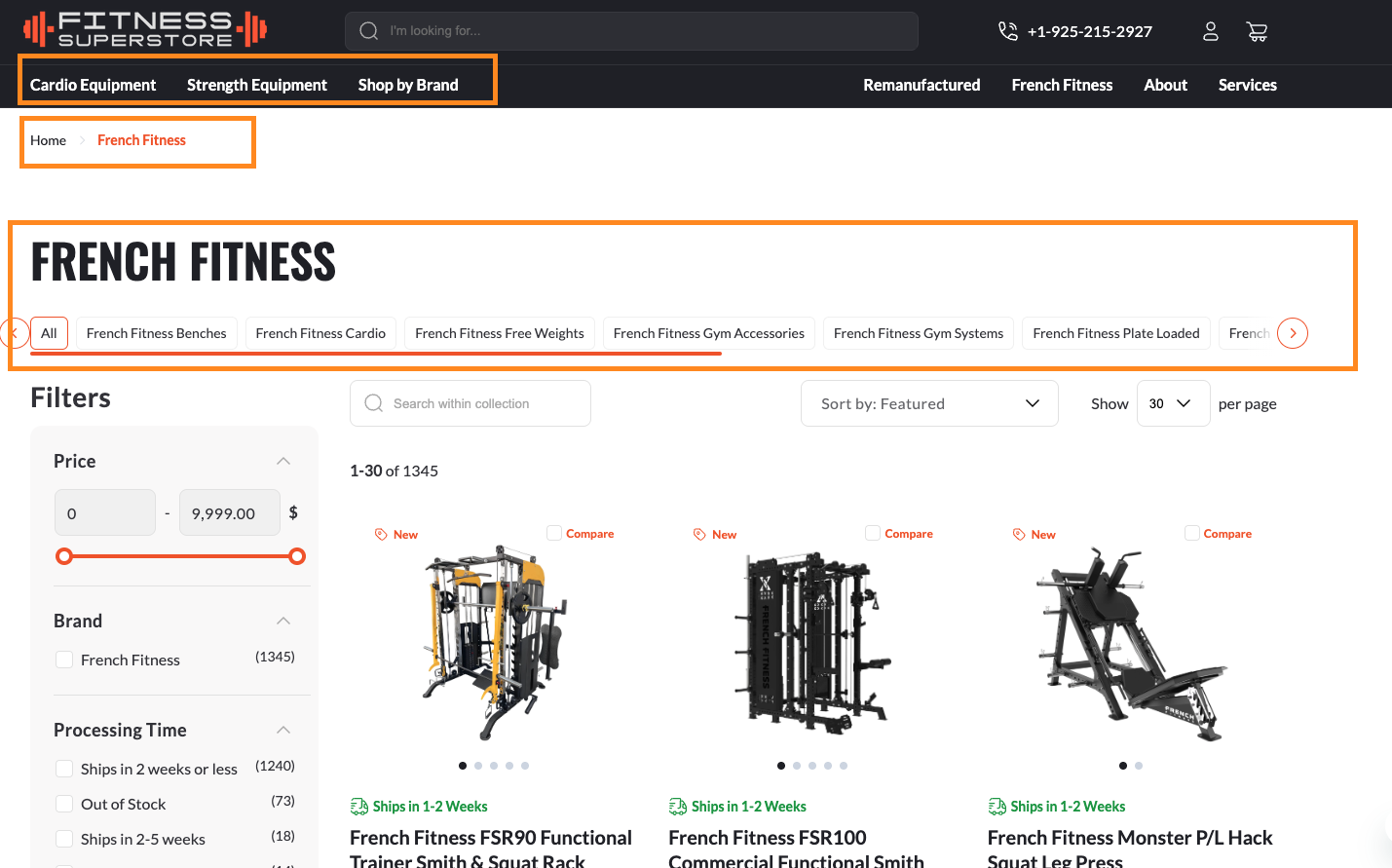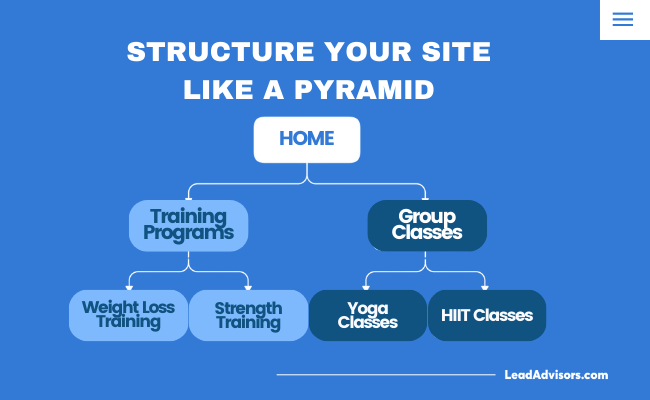Ever feel like your website is a mess of random content? SEO Silos are your solution—it’s all about neatly grouping related content into structured sections (or silos), so users and search engines instantly understand what your site is all about.
A strong website structure isn’t just a technical thing – it’s an SEO superpower. Silos help Google crawl your site smarter and faster, and they guide visitors through a more logical, binge-worthy content journey.
Instead of a flat site where everything fights for attention, silos build topic authority, improve user experience, and boost search rankings.
Of course, there’s some debate: silo SEO vs. traditional structures. Old-school setups still work – but silos are strategic, clean, and built for long-term growth. And honestly? They just make sense.
Understanding the Basics of SEO Silos

Let’s break this down. A silo structure in SEO is all about organizing your content into tightly themed sections. Each section (or silo) focuses on one core topic, and everything within it supports that theme. It’s kind of like building a mini-library on your site where each shelf has a clear label and only holds related books.
Now, silos come in two flavors:
- Hard silos are built into your website’s URL structure. For example:
yourwebsite.com/seo/on-page/
yourwebsite.com/seo/link-building/
This shows both users and search engines that all the content under SEO belongs to the same topic. - Soft silos are created through internal site linking. Even if your URLs aren’t structured perfectly, you can still build strong topical relationships by linking relevant articles together naturally throughout your content.
The best results usually come when you use both. That’s when Google really starts to understand what your site is all about.
Here’s how it works structurally:
 You start with a parent page – often called a hub or pillar page – that gives an overview of a broad topic (like “SEO Strategies”). Under that, you create child pages (supporting articles) that go deep into specific subtopics (like “On-Page SEO,” “Keyword Research,” or “Backlink Building”). All those child pages link back to the parent—and to each other when relevant.
You start with a parent page – often called a hub or pillar page – that gives an overview of a broad topic (like “SEO Strategies”). Under that, you create child pages (supporting articles) that go deep into specific subtopics (like “On-Page SEO,” “Keyword Research,” or “Backlink Building”). All those child pages link back to the parent—and to each other when relevant.
This kind of hierarchical content organization makes it super easy for Google to crawl your site, see how topics are connected, and understand your authority in that niche.
Plus, SEO silos improve:
- Internal linking – so your pages support and strengthen each other.
- Keyword relevance – because everything in a silo revolves around a single theme.
- User experience – your visitors can find everything they need without jumping around aimlessly.
In short: SEO silos are like giving your entire website a GPS. Everything becomes easier to find, and everyone – humans and bots alike – wins.
Step-by-Step Guide to Creating an SEO Silo Structure

Now that you get the “why” behind SEO silos, let’s dive into the “how.” Building a strong silo structure isn’t just a best practice – it’s a smart way to guide both users and search engines through your content, helping you rank better and keep visitors engaged.
Planning Your Silos

Great SEO starts with a plan. Before anything else, you need to figure out how to create distinct subject categories for your site.
Begin with solid keyword research. Look for the most relevant keyword phrases around your niche. Broad terms become your silo topics, and long-tail ones shape your content pages within those silos.
- Build your content hubs around those keywords. Each hub (aka landing page) serves as the top-level page for a silo and links out to relevant pages that go deeper into the topic.
- Choose one primary page (your hub) and several supporting content pages. All should be tied to a single theme and help form a clear silo site structure.
- Use tools or mind maps to visualize your site architecture. This will help you keep track of your internal links, ensure nothing overlaps, and ensure every page has a home.
Implementing Hard Silos (URL Structure)
With your plan set, it’s time to put that structure into action – starting with the URLs.
- A hard silo uses clean, logical URL paths. For example:
/digital-marketing/email-marketing/landing-page-optimization
/digital-marketing/seo/technical-seo-guide
These not only tell search engines where the page lives but also strengthen your overall structure. - For an eCommerce example:

/fitness-equipment/treadmills/
/fitness-equipment/kettlebells/
/fitness-equipment/accessories/
Why does this matter? Because Google and other search engines favor websites with a clear hierarchy. A solid SEO silo structure makes crawling and indexing easier—boosting your rankings on search engines in the process.
Implementing Soft Silos (Internal Linking)
Even with the correct URLs, your silos fall apart without good internal links.
- Think of internal linking as the glue that keeps your silos connected. Each supporting page should link back to the landing page and, where it makes sense, to other relevant pages within the same silo.
- Anchor text is key here. Use subject-relevant keyword phrases as anchor text to show both users and bots what the linked page is about without sounding spammy.
- Try these silo-friendly linking strategies:
- Inline links in the content
- Related articles or “read next” suggestions
- Strategic use of breadcrumbs
- Consistent relevant pages linking within a silo
Done right, this tight silo structure improves site architecture, builds topic relevance, and strengthens your authority in the eyes of search engines.
SEO Benefits of Silo Structures
Let’s talk results – because once you implement a solid SEO silo structure, things start to click in a big way.
| Area of Impact | What Happens | Why It Matters |
| Search Engine Crawling | Clear silo structure improves site architecture and navigation for bots | Faster indexing, better understanding, and increased chances of ranking higher |
| Keyword Relevance | Related pages grouped together to build topical authority | Google recognizes your site as a go-to source for specific subjects |
| User Experience | Users can easily explore related topics without getting lost | Longer sessions, lower bounce rates, and more conversions |
| Internal Linking | Links point to relevant pages within the same silo | Boosts multiple landing pages, not just one, for subject-specific keyword phrases |
| Domain Authority | More quality content = stronger silos | Increases overall trustworthiness and authority of your entire site over time |
TL;DR:
SEO silos = Better crawlability + Better UX + Better rankings.
It’s a strategic move that pays off across the board.
SEO Silo Best Practices
So you’ve built your silos – now let’s make sure they stay effective. Great SEO silos aren’t just structured once and forgotten – they’re managed, updated, and designed to grow with your site.
With theme-based silos becoming more flexible, it’s time to rethink how you plan your website structure for both users and search engine bots. Let’s walk through a few smart strategies to improve your website content layout, enhance your internal linking structure, and ultimately, help you rank higher on Google.
1. Structure Your Site Like a Pyramid

A pyramid structure starts with your homepage at the top, followed by major category pages, and then drills down into individual service or blog content. This layout mirrors how most successful websites – including LeadAdvisors’ blog – are built.
For instance, our blog homepage may link out to categories like “SEO,” “Lead Generation,” and “Content Strategy.” Each of those then branches into more specific silo pages such as “Keyword Research,” “Sales Funnels,” or “Blog Content Creation.”
Why it works:
- User-friendly navigation – Visitors can explore categories and subtopics easily.
- Link juice flows effectively – Since homepages typically receive the most backlinks, placing top-priority pages closer to the homepage helps distribute that authority.
- Contextual internal linking – Categories and subcategories stay connected, making it easier for both users and search engine bots to understand content relationships.
This setup keeps the benefits of creating theme-based silos without restricting cross-linking between related topics. And that brings us to…
Internally Link Where It Makes Sense

Rigid silo structures often limit cross-topic links, which can hurt usability and discovery. At LeadAdvisors, we prefer a more flexible internal linking structure – one that connects related pages across different categories when it makes sense.
For example, a blog post on “Optimizing Landing Pages” in our “Conversion” category might link to a post on “Using Keywords in Blog Content” under “SEO.” These are technically in different silos, but they’re topically relevant – so the link benefits both users and your rankings.
Use tools like Ahrefs to uncover internal linking opportunities. Their Site Audit’s Link Opportunities report and Page Explorer tool make it easy to identify relevant pages using similar keywords and keyword synonyms.
Build Content Hubs, Not Just Blog Archives
Publishing blog posts chronologically is standard – but it’s not great for SEO. Instead, group related posts into content hubs, which act like upgraded silo pages. These hubs organize and connect content around a central topic.
On LeadAdvisors, a content hub on “SEO Strategies” could link out to supporting articles on “Technical SEO,” “Keyword Mapping,” and “SEO Tools.”
Unlike traditional silos, you’re free to link between hubs. If we have another hub on “Content Marketing,” and there’s a shared topic – say, a post on “Creating Long-Form Blog Content for SEO” – linking across hubs helps users and supports SEO.
Keep Important Pages Within Reach
Pages buried five or more clicks deep aren’t just harder for users to find—they may also be deprioritized by search engine bots. That’s why you should keep high-value website content within 2–3 clicks from your homepage and on primary and secondary categories.
Using Ahrefs’ Structure Explorer, you can see how deep your pages are. If you find that important posts like “How to Improve Your Website’s Link Structure” or “Silo Pages for Higher Rankings” are hidden in the 5+ click range, it’s time to add new internal links to elevate their visibility.
Common SEO Silo Mistakes (And How to Avoid Them)

Even the best silo setup can go sideways if you’re not careful. Here are the top mistakes to watch out for – and how to keep your SEO silo structure strong and effective.
1. Overcomplicating silos
It’s tempting to go deep and layer your site endlessly, but too many subfolders and extra steps just confuse users and search engines. Keep your silo structure clean and straightforward: landing page → relevant content pages. That’s it.
2. Forgetting cross-silo linking
Yes, silos should stay focused – but you can link across silos when it helps the reader. Just make sure the internal links are natural and contextually relevant. Intelligent relevant page linking won’t break your silos – it actually improves usability and site architecture.
3. Ignoring user behavior and UX
If users bounce fast or get lost in your navigation, that’s a problem. A strong silo site structure should guide users easily from one point to the next. Monitor behavior metrics like bounce rate and time on page to spot UX issues early.
4. Keyword cannibalization
This one’s sneaky. If multiple pages within the same silo target the exact subject-relevant keyword phrases, they’ll compete with each other – hurting your rankings on search engines. Plan ahead so each page has a unique keyword focus.
5. Weak internal linking
No matter how perfect your URLs are, your silos fall apart without strong internal links. Every page within a silo should support the other pages. If a content page doesn’t link to the landing page, it’s not doing its job.
7. SEO Silos vs. Topic Clusters: Which One Works Best?

Let’s clear up the confusion: SEO silos and topic clusters may sound similar, but they’re not the same—and knowing the difference can level up your content strategy.
So, what’s the difference?
- SEO silos focus on structure and URL hierarchy. Think folders within folders. Everything is grouped based on themes, and each section is kept tight with internal links connecting relevant pages under a main landing page.
- Topic clusters, on the other hand, are all about content strategy. They don’t rely on URLs or folders – instead, they center around a pillar page (similar to a landing page) and link out to cluster content using intelligent internal linking. It’s more flexible and better suited to dynamic blog content.
Why do search engines love topic clusters?
Because they reflect how people search. Users ask detailed questions, and topic clusters allow you to answer those questions in separate, focused content pages, all while feeding authority back to the pillar page. That builds topical authority and relevance – two things search engines eat up.
When should you use a hybrid model?
Honestly? Most modern websites benefit from a mix of both.
- Use SEO silo structures to organize evergreen sections of your site like services, products, or resource centers.
- Use topic clusters within those silos to build out blog content and cover subject-relevant keyword phrases in depth.
The combo gives you the best of both worlds: strong site architecture + flexible, search-friendly content.
8. Case Studies & Real-World Examples

Let’s bring SEO silos to life with real-world examples. Here’s how different types of websites are crushing it by using innovative silo structures to boost their search engine rankings and improve user experience.
eCommerce Sites
Big eCommerce brands are pros at this. They create distinct subject categories for products using hard silos like:
/fitness-equipment/treadmills/ or /apparel/men/shoes/.
Each product category becomes a landing page, with filters, descriptions, and links to relevant pages (like product variations or size guides). This clear SEO silo structure helps search engines understand product groupings, improving both crawlability and conversions.
SaaS & Tech Websites
SaaS companies often use silos to separate features, use cases, and industries. For example:
/features/automation/ → links to blog posts, FAQs, and case studies on automation.
They combine hard silos with topic clusters to cover subject-relevant keyword phrases across multiple content pages, using internal links to connect them back to their hub page.
Blog & News Sites
Content-heavy sites usually lean into soft silos. A blog might organize articles into content hubs like:
/marketing/, /finance/, or /health/,
…but the real power is in the internal linking between related posts. Each hub page acts like a topic cluster, keeping readers engaged and guiding search engines through deep, connected content.
High-Ranking Sites: What We Can Learn
The best-performing websites don’t just rely on one approach – they build flexible, scalable silos. They:
- Avoid orphan pages
- Use breadcrumbs and clean navigation.
- Optimize site architecture for both users and bots.
- Regularly audit and expand silos as they grow.
Whether you’re running a blog, online store, or software company, a well-planned SEO silo structure can help your landing pages and relevant pages climb higher – and stay there.
9. How to Audit and Optimize Existing Silo Structures

Already have some content live but not sure if your SEO silo structure is actually working? No worries – it’s never too late to fix and fine-tune.
Step 1: Analyze Your Site Structure and Internal Links
Use tools like Screaming Frog, Sitebulb, or Ahrefs Site Audit to crawl your site. These tools help you visualize your current site structure, spot broken internal links, and identify orphan pages that aren’t tied to any silo.
Look for pages that are too deep in your structure or floating without connections – they’re probably weakening your silos.
Step 2: Check Performance with Google Search Console & Ahrefs
Head over to Google Search Console to see how your landing pages are performing in search results.
Which pages are ranking? Which ones are underperforming?
Pair that with Ahrefs to check keyword rankings, internal linking stats, and how well your relevant pages are grouped.
Pro tip: Filter your data by silo topic to assess whether your subject-relevant keyword phrases are concentrated within the right clusters.
Step 3: Fix Broken Silos and Reorganize
If your silos look messy or disconnected, it’s time for content pruning or a cleanup:
- Reassign pages to the correct silo
- Add or adjust internal links to strengthen connections.
- Reorganize folders or URLs if needed (just don’t forget your redirects!)
- Create new landing pages if specific topics are missing a clear hub.
And remember – silo site structure is not a set-it-and-forget-it strategy. Regular audits help you adapt to new content, keyword shifts, and changes in user behavior.
Frequently Asked Questions
What is an SEO silo?
What’s the difference between hard silos and soft silos?
Do SEO silos help improve search engine rankings?
Can I link between different silos?
How often should I audit my silo structure?
Should I use SEO silos or topic clusters?
Are SEO silos still relevant with Google’s AI-driven algorithms?
The Future of SEO Siloing
So, is the SEO silo structure here to stay? Absolutely. In fact, it’s evolving—and if you play it smart, you’ll stay one step ahead.
As Google’s algorithm becomes more advanced with AI and machine learning, it’s getting better at understanding context, relationships, and content depth. That means your site architecture and how you organize internal links matter more than ever.
A tight, well-linked silo structure gives Google a clear map of your topical authority—and makes it easier for AI-driven crawlers to determine what your landing pages and relevant pages are all about.
Will Silos Still Matter in the Future? Yes—if anything, they’ll become even more critical. Google continues to reward content that’s well-organized, semantically connected, and easy to crawl. And while topic clusters and natural language processing are rising, the foundation of innovative silo site structure will always support better rankings on search engines.











